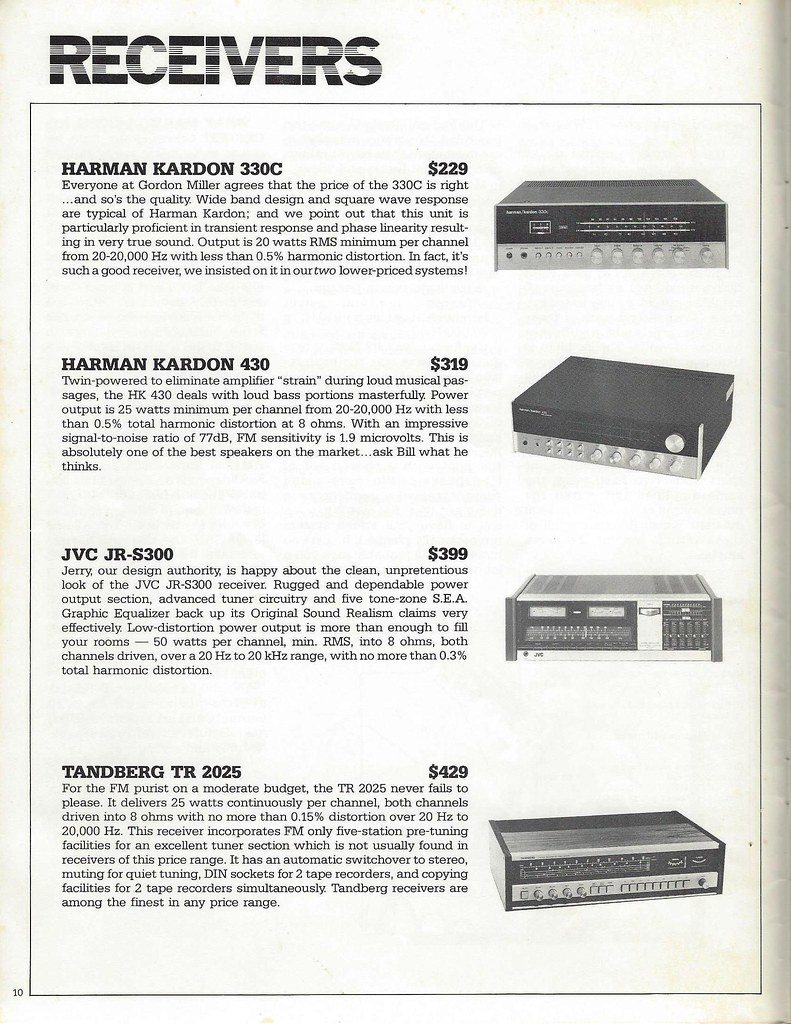Question regarding Luxman receivers
PJF
Posts: 4
Hi folks. I have a vintage pair of SDA-SRS 2.3 speakers that have been in dry storage for 20 years. I am considering purchasing one of two Luxman Receivers: an R-115 or an R-351.
Is one of these more suitable to drive these speakers? Also, are they both common negative ground receivers? Thanks much.
Is one of these more suitable to drive these speakers? Also, are they both common negative ground receivers? Thanks much.
Comments
-
I have the same speakers. You will get sound to your ears, but not music to your ears. You will need more power captain. Others will chime in. We've all started where you're at. Read and learn. Welcome back.
-
The Luxman R-115 has pre-outs so you can add a power amp. This would be a reasonable first upgrade. Buy or borrow a used power amp with a couple hundred watts and hear the improvement.
-
Find a R-117 instead. One of the strongest receivers I've ever heard. I seriously doubt you'd be disappointed.
-
Thank you all. Polk tells me a common ground amp/receiver is required with these speakers. The problem is that when I ask sellers if their amp/receiver is a common ground, people don't know what the heck I'm talking about. Since common ground was common, ahem, back in the day, it wasn't such an issue. Anyway, I originally had a Luxman (since has gone missing.) So I figured I'd try and pick up an inexpensive Luxman amp or receiver to make sure the speakers are still operative before investing in a more powerful/more expensive model Make sense?
-
Thank you all. Polk tells me a common ground amp/receiver is required with these speakers. The problem is that when I ask sellers if their amp/receiver is a common ground, people don't know what the heck I'm talking about. Since common ground was common, ahem, back in the day, it wasn't such an issue. Anyway, I originally had a Luxman (since has gone missing.) So I figured I'd try and pick up an inexpensive Luxman amp or receiver to make sure the speakers are still operative before investing in a more powerful/more expensive model Make sense?
I you have a multimeter take it with you when you look for an amp. Search "Test for Common Ground Amp" on this forum for instructions on how the test the amp. -
Receivers are common ground by nature.
-
I checked my R-117 today and it showed common ground. I also have a R-114 and it too is CG.
-
Political Correctness'.........defined
"A doctrine fostered by a delusional, illogical minority and rabidly promoted by an unscrupulous mainstream media, which holds forth the proposition that it is entirely possible to pick up a t-u-r-d by the clean end."
President of Club Polk -
By nature? I disagree.
What stops a designer of a receiver from inverting one channel like Carver did with some amps?
What stops a designer of a receiver from adding resistors between the negative terminals and chassis ground, making the receiver "semi-common-ground" like all sorts of power amps are currently made now? (The manufacturer of my amp called it a "safety feature" and warned about putting a jumper wire between the negative terminals to bypass the resistors. I have no idea what makes this a "safer" design, although I suppose it might make some minor improvement on the noise level of the amp. Maybe.)
I have little trouble imagining a multi-channel receiver where pairs of channels can be bridged. I can't provide an example of one--but there's no reason (other than cost) that a manufacturer couldn't provide that feature.
Most receivers are common-ground because it's the cheapest way to do things, not because it's an inherent virtue or some sort of requirement otherwise. "I" would not count on a receiver being common-ground without looking at the schematic or testing it with an ohmmeter, because 1) verifying is sooooo easy, and 2) if it's not common-ground it makes a major difference in sound quality, or could potentially cause blown-up speakers/amp.
-
Since I am too lazy to check (even given that there's one upstairs) -- what about the dual mono power supply harman/kardon receivers of yore; e.g., the hk430 and hk730?
It seems that they could be built without grounds tied together (I guess that's fully fully-complementary?) -- whether they were, though, I dunno.
... not that I am thinking this through very clearly
 Scan0012 by Mark Hardy, on Flickr
Scan0012 by Mark Hardy, on Flickr
(PS I'll bet that the "Bill" referred to in the catalog ad copy above would pick right up on the fact that the hk430 is not a speaker... if not, I might suggest talking to another sales person before buying something )
)
-
"Dual-Mono" in practice seems to have more to do with the power supply ahead of the output transistors, not so much with the "returning" current on the negative side. Again, it'd be entirely possible to fully separate the negative sides--or to partially-separate them using a resistor between each negative terminal and chassis ground as on my amp, various Adcom and Parasound amps, and no doubt all sorts of other amps. Wild guess: the two channel's negative terminals are either connected directly (common ground) or connected through resistors (Partial-common-ground)
So again...it's easy to verify, and that prevents problems.




